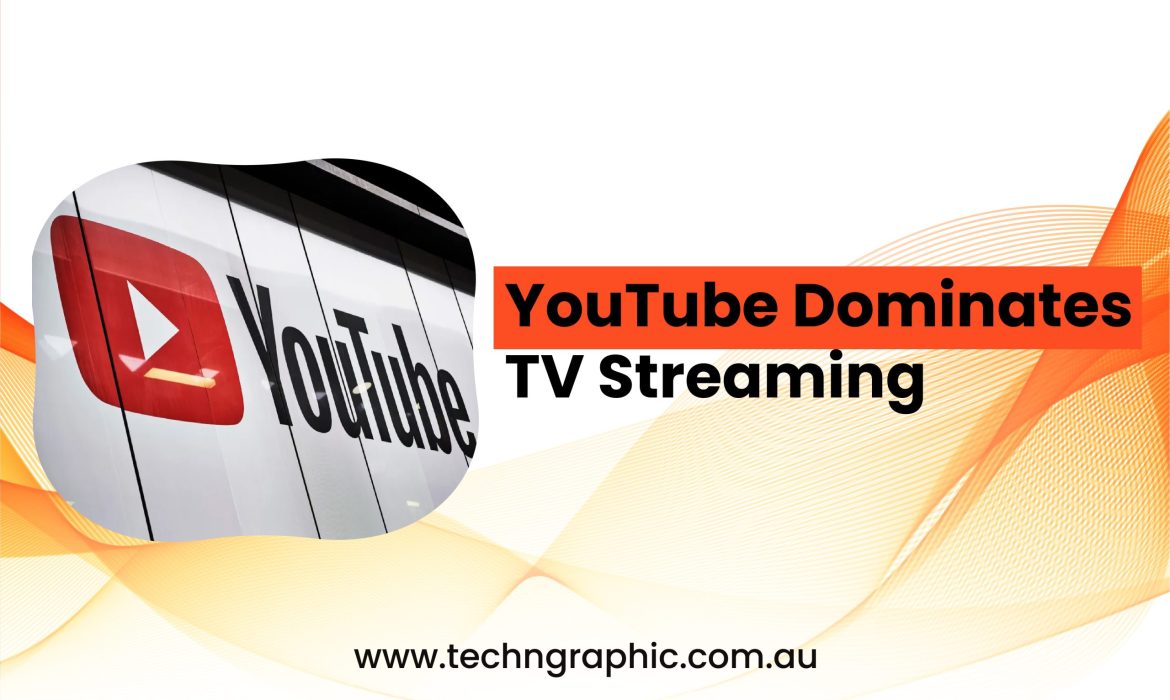Did you know that YouTube has officially surpassed mobile as the primary platform for TV streaming in the U.S.? With over one billion hours of content watched daily on TV screens, YouTube is now leading the charge in streaming viewership. This shift presents a massive opportunity for marketers to reach engaged audiences through new advertising formats and longer watch times.
As YouTube continues to evolve into a dominant TV streaming platform, brands and advertisers must rethink their strategies to maximize engagement. In this blog, we’ll explore the reasons behind this shift, new advertising opportunities, and key strategies to leverage YouTube’s growing presence on TV screens.
The Rise of YouTube as a TV Streaming Giant
YouTube Surpasses Mobile for TV Streaming
According to YouTube CEO Neal Mohan, TV has now overtaken mobile as the primary device for watching YouTube in the U.S. Nielsen data also confirms that YouTube has been the #1 streaming platform in the U.S. for two years in a row. This shift is fueled by the increasing adoption of smart TVs and streaming devices, making YouTube a central hub for long-form content consumption.
Why Are Viewers Choosing YouTube on TV?
Several factors contribute to YouTube’s dominance in TV streaming:
- Smart TV Integration – YouTube’s seamless compatibility with smart TVs and streaming devices makes it easily accessible.
- Longer Watch Times – Viewers tend to watch longer-form content on TV compared to mobile devices.
- Preference for High-Quality Content – The bigger screen enhances the viewing experience for podcasts, documentaries, and live events.
New Advertising Opportunities on YouTube TV
With the shift to TV screens, YouTube has introduced innovative advertising formats that allow brands to engage viewers in new ways. Here are some key ad opportunities marketers can leverage:
1. QR Code Ads
QR codes displayed on TV screens enable seamless interaction between TV and mobile. Viewers can scan the code to visit websites, sign up for services, or access exclusive offers without disrupting their viewing experience.
2. Pause Ads
Pause ads appear when viewers pause a video, making them an unobtrusive yet effective way to capture attention. These ads offer a strategic way to engage audiences without interrupting their content consumption.
3. Second-Screen Experiences
YouTube is testing second-screen features that allow users to engage with content on their mobile devices while watching on TV. This feature enables users to comment, share, and even make purchases directly from their phones while keeping the video playing on the big screen.
Key Strategies for Marketers to Leverage YouTube’s TV Growth
1. Optimize Content for the Big Screen
As more users watch YouTube on TV, marketers need to focus on high-quality, visually engaging content. Brands should consider:
- Broadcast-quality production – Ensure videos have clear visuals and high-resolution graphics for an immersive TV experience.
- Engaging storytelling – Create content that holds viewers’ attention for longer periods.
- Captions and subtitles – Many users watch videos in shared spaces, making captions essential for accessibility.
2. Leverage Long-Form Content
With longer watch times on TV, brands can invest in extended content formats such as:
- Video Podcasts – YouTube is now the top platform for podcast consumption in the U.S. Video podcasts provide an excellent way for brands to engage audiences on a deeper level.
- In-Depth Product Demos – TV viewers are more likely to watch longer videos, making it a great platform for detailed product demonstrations and tutorials.
- Educational Series & Webinars – Creating informative and value-driven content can enhance audience retention and brand credibility.
3. Focus on Cross-Platform Analytics
As viewers interact with content across multiple devices, tracking conversions and engagement can become complex. Brands should implement cross-device analytics tools to:
- Track ad performance across TV, mobile, and desktop.
- Understand viewer behavior and optimize targeting strategies.
- Measure ROI effectively using attribution models.
Conclusion
YouTube’s transition from a mobile-first platform to a dominant TV streaming service opens up a world of opportunities for marketers. By embracing new ad formats, optimizing content for big screens, and leveraging long-form engagement, brands can connect with audiences in a more impactful way.
Now is the time for marketers to adapt to this shift and capitalize on YouTube’s growing influence in the TV streaming space. How will your brand take advantage of this new era of digital advertising?
Let us know your thoughts in the comments below!



